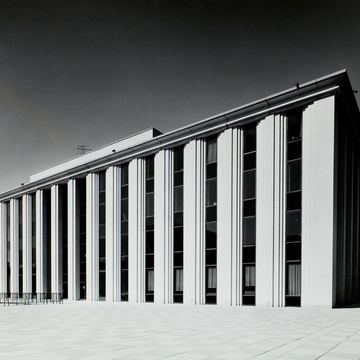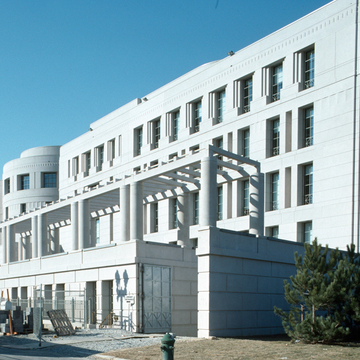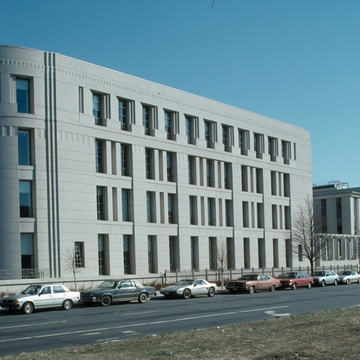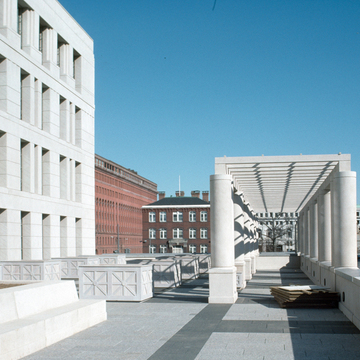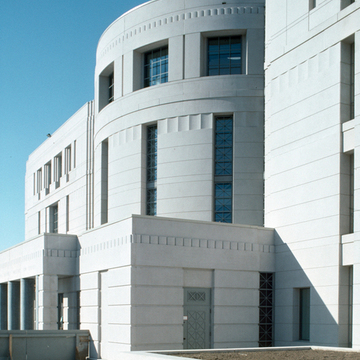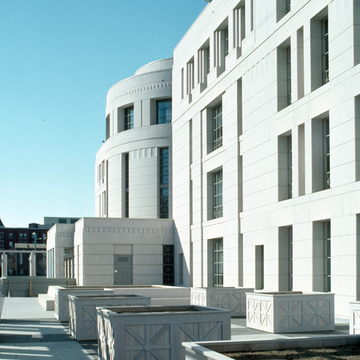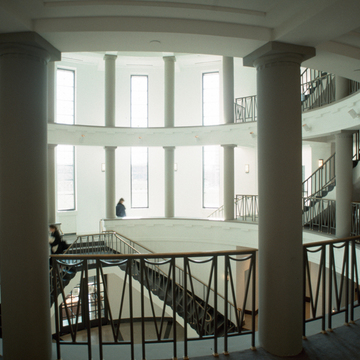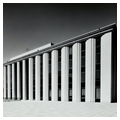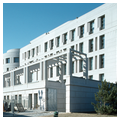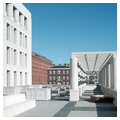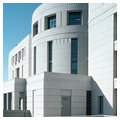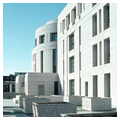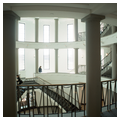At least 3 miles from the main campus in Georgetown, the Georgetown University Law Center is located near the eastern edge of the old downtown in order to provide its students with easy access to the District and federal courts at Judiciary Square and to the Supreme Court.
Edward Durell Stone designed the building in a large and dignified idiom expressive of the majesty and remoteness of the law. Like other of his buildings during that period, it is a rectangular box topped by an overhanging flat roof and flat attic floor above. Clustered pilasters separate vertical ribbons of windows and become narrower near the doorways. These pilasters provide a sense of depth and modulate the otherwise flat wall surface. At the rear of the block, the building is reached by a long staircase leading to a large terrace.














